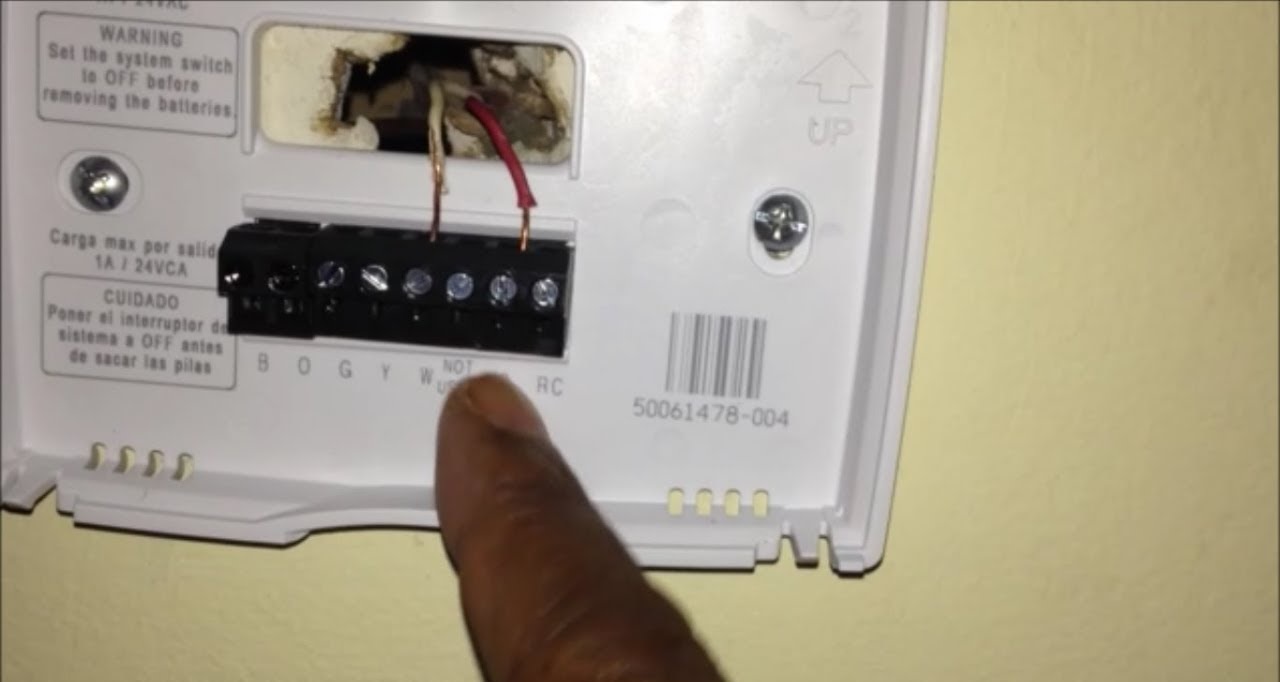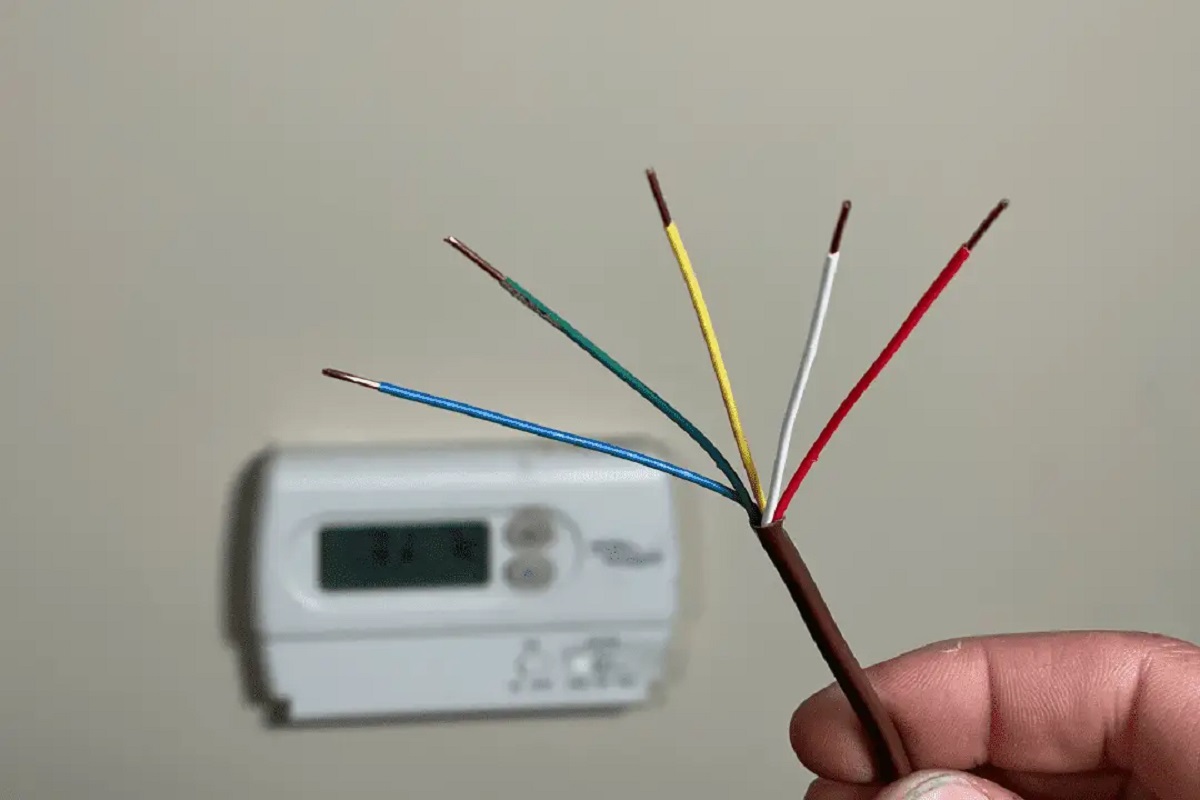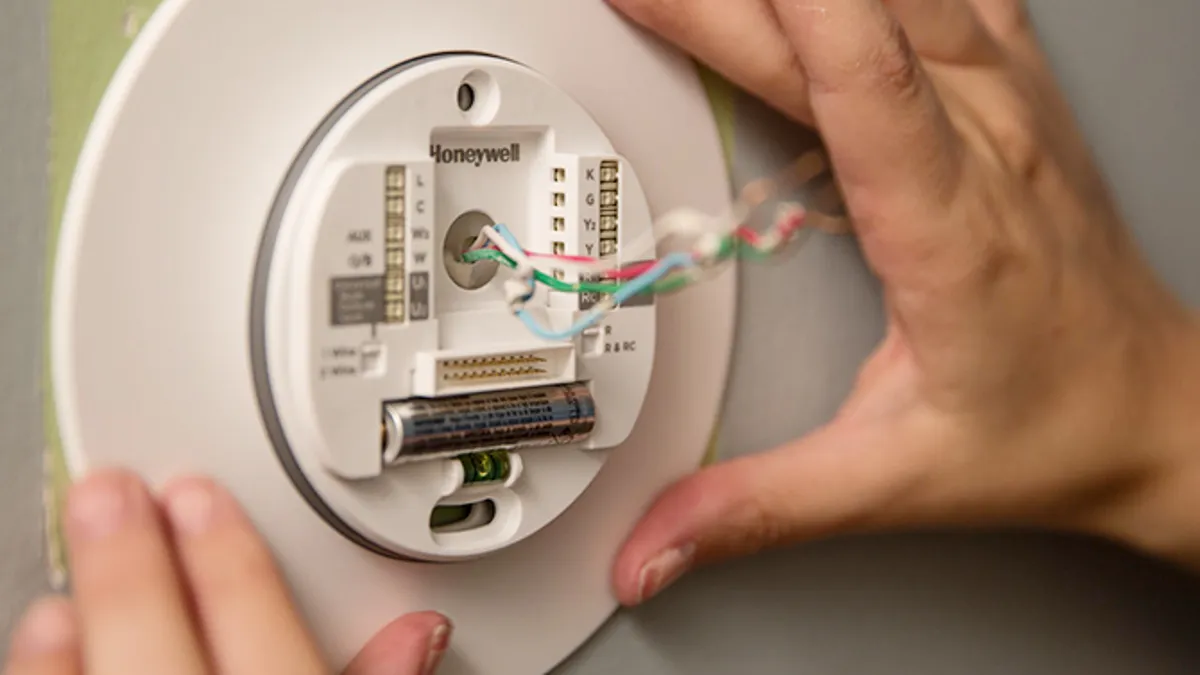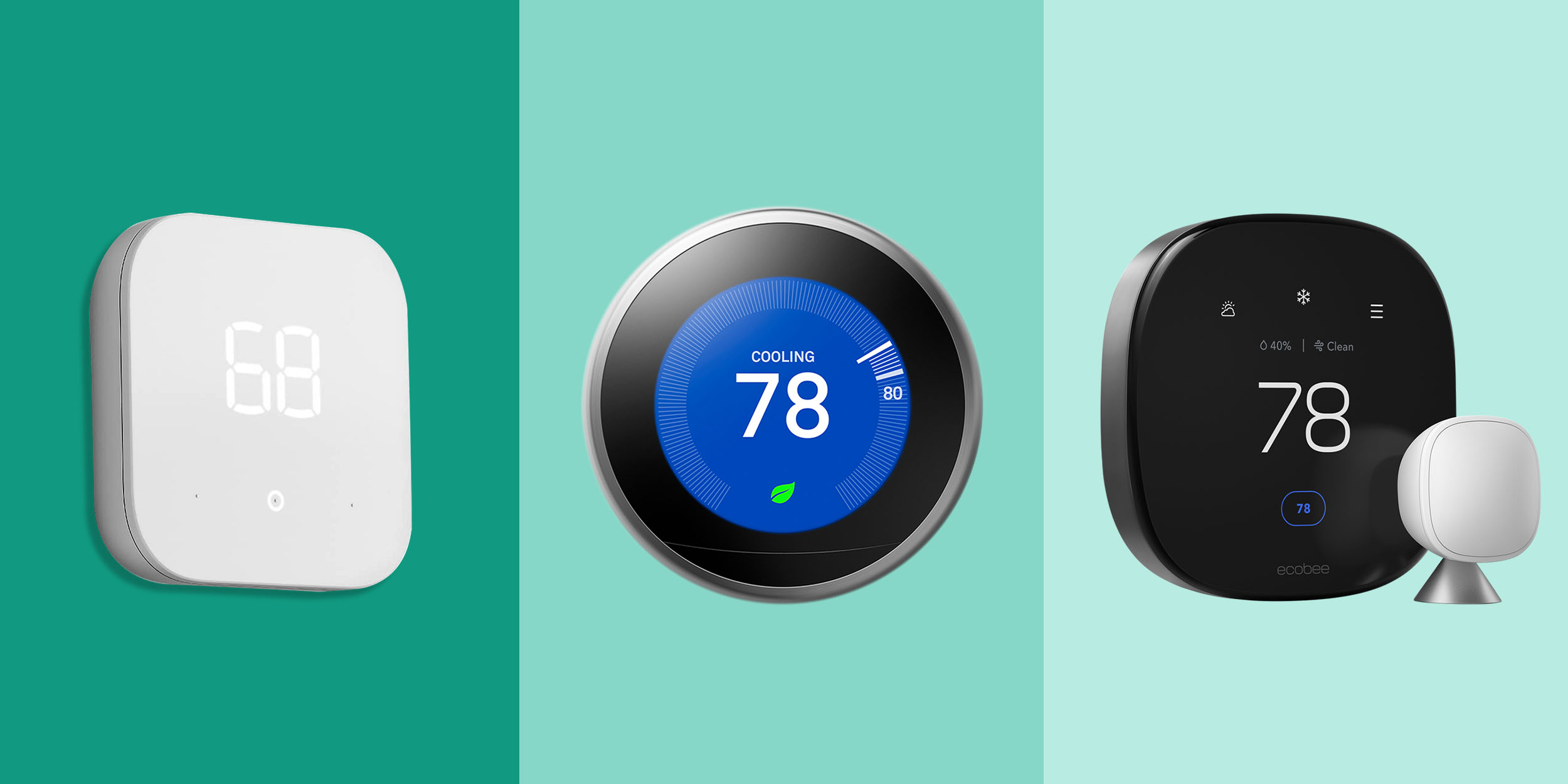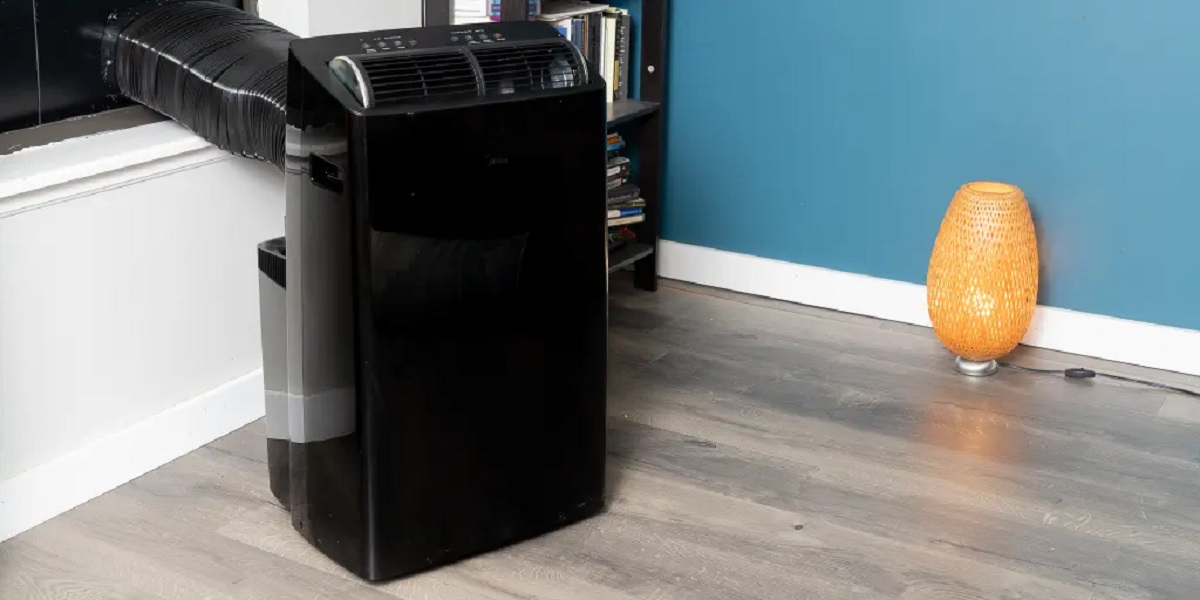What Is A C Wire for Thermostats
A C wire, short for common wire, is an essential part of a thermostat’s wiring system. It is a low-voltage wire that provides a continuous flow of power from the heating and cooling system to the thermostat. The C wire completes the electrical circuit and allows the thermostat to receive constant power, enabling it to function properly.
The C wire is typically used in newer thermostats, particularly those with advanced features like Wi-Fi connectivity or touchscreen displays. These types of thermostats require a constant power source to operate efficiently, and the C wire fulfills that requirement.
Without a C wire, a thermostat may experience power issues, such as inconsistent operation, frequent battery replacements, or even a complete shutdown. The C wire ensures a consistent supply of power, eliminating the need for batteries and ensuring the thermostat functions reliably.
In older thermostat setups, the common wire may not have been necessary because the older models did not require constant power. However, as technology advances and thermostats become more sophisticated, the need for a C wire has become increasingly important.
It is important to note that not all heating and cooling systems come with a C wire pre-installed. In some cases, the C wire may be present but not connected. If your thermostat does not have a C wire or if it is not connected, you may need to install or connect one to ensure proper operation of your thermostat.
Next, we will explore the importance of the C wire and how it works in more detail.
Why is the C Wire Important for Thermostats?
The C wire plays a crucial role in the functionality of modern thermostats. Without a C wire, thermostats may not receive a consistent power supply, which can lead to various issues and limitations in their operation.
One of the main reasons why a C wire is important is because it provides a constant source of power to the thermostat. Unlike older thermostats that relied on batteries or intermittent power from the heating and cooling system, thermostats with a C wire are continuously powered. This allows them to maintain a stable connection to your HVAC system, ensuring reliable performance and accurate temperature control.
Another significant advantage of the C wire is that it eliminates the need for battery replacements. Thermostats without a C wire often rely on batteries as a backup power source. However, constantly changing batteries can be inconvenient and costly. With a C wire, the thermostat can draw power directly from the HVAC system, eliminating the reliance on batteries and saving you the hassle of replacing them frequently.
Furthermore, the C wire is essential for enabling advanced features on modern thermostats. Many smart thermostats require a constant power supply to fully utilize features such as Wi-Fi connectivity, programmable schedules, and remote access. These features not only provide convenience but also help to improve energy efficiency and reduce utility costs. Having a C wire ensures that your thermostat can consistently access these features without any interruptions.
In summary, the C wire is important for thermostats because it provides a continuous power supply, eliminates the need for battery replacements, and enables advanced features. If your thermostat does not have a C wire or it is not connected, you may face power-related issues and limitations in the functionality of your thermostat. In the next section, we will explore how the C wire works in more detail.
How Does the C Wire Work?
The C wire, also known as the common wire, is part of the thermostat wiring system that allows for the continuous flow of power. It serves as a return path for electrical current from the heating and cooling system back to the thermostat.
To understand how the C wire works, it’s helpful to have a basic understanding of thermostat wiring. Most thermostats operate on a 24-volt AC power supply, which is supplied by the furnace or air conditioner. The power is distributed through various wires, including the C wire.
The C wire is typically connected to the C terminal on the furnace or air handler and the C terminal on the thermostat. This terminal is designated specifically for the common wire. When the thermostat is powered on, the C wire completes the electrical circuit by providing a continuous path for the electrical current to flow.
Unlike the other wires in the thermostat system, such as the R (power), W (heat), and Y (cooling) wires, the C wire does not control any specific functions of the heating and cooling system. Instead, it acts as a stable reference point for the electrical current to return to the power source.
The C wire’s continuous flow of power ensures that the thermostat stays consistently powered, allowing it to control the heating and cooling system accurately. It provides the necessary power for the thermostat’s display, controls, and internal circuitry to function optimally.
If your thermostat does not have a C wire, there are alternative methods to provide power, such as using an external power supply, utilizing a power-stealing method, or utilizing a fast Wi-Fi setup that consumes less power. However, these alternatives may have limitations or require additional setup.
In the following section, we will discuss whether a C wire is necessary for your thermostat and how to determine if you have one installed.
Do I Need a C Wire for My Thermostat?
Whether or not you need a C wire for your thermostat depends on several factors, such as the type of thermostat you have and the features you want to utilize.
If you have an older thermostat without advanced features like Wi-Fi connectivity or touchscreen displays, you may not necessarily need a C wire. These older thermostats often operate on battery power or rely on the power from the heating and cooling system’s other wires, such as the R (power) wire.
However, if you have a newer thermostat with advanced features or a smart thermostat, it is highly recommended to have a C wire. These types of thermostats require a continuous power source to operate effectively and take advantage of all their features.
Without a C wire, a thermostat may experience power-related issues. These can include erratic behavior, frequent battery replacements, or even a complete shutdown. Additionally, without a C wire, some advanced features, such as remote access or energy usage reports, may not function properly or may be limited.
To determine if you need a C wire for your thermostat, you can start by checking your thermostat’s documentation or consulting the manufacturer’s website. They will often provide information on whether a C wire is required for your specific model.
You can also physically inspect your thermostat’s wiring. The C wire is usually labeled and connected to the C terminal on both the thermostat and the heating and cooling system. If there is a wire connected to the C terminal, then you already have a C wire installed.
If you don’t have a C wire, but you want to install a thermostat that requires one, you have a few options. You can consult a professional HVAC technician who can run a new C wire from your furnace or air handler to your thermostat. Alternatively, you can explore wireless thermostats or utilize alternative power methods, although these may have limitations and require additional setup.
In the next section, we will go over how to install a C wire if you don’t have one already.
How Do I Know If I Have a C Wire?
To determine if you have a C wire in your thermostat wiring setup, there are a few steps you can take:
1. Check your thermostat: Start by removing the cover of your thermostat and inspecting the wiring terminals. Look for a wire connected to the C terminal, which is usually labeled. If you see a wire connected to the C terminal, then you have a C wire installed. Note that the color of the wire may vary, but it is commonly blue.
2. Examine the wiring at the heating and cooling system: Locate your furnace or air handler, which is typically in the basement, attic, or a utility closet. Open the access panel and visually inspect the wiring terminals. Look for a wire connected to the C terminal. If you find a wire connected to the C terminal at both the thermostat and the heating and cooling system, then you have a C wire.
3. Consult your thermostat’s documentation: If you have the user manual or installation guide for your thermostat, it may provide information about the presence of a C wire. Look for any references to a common wire or C wire in the wiring section of the documentation.
If you have gone through these steps and confirmed that you do not have a C wire, it is possible to install one yourself or hire a professional HVAC technician to handle the installation. Keep in mind that running a new wire may involve some drilling and wiring work, so it is recommended to consult a professional if you are not experienced with electrical work.
In the next section, we will explore options for installing a C wire if you don’t already have one.
How Can I Install a C Wire If I Don’t Have One?
If your thermostat wiring does not include a C wire but you want to install a thermostat that requires one, you may be able to add a C wire to your setup. Here are some steps to help you install a C wire:
1. Turn off power: Before starting any electrical work, turn off the power to your heating and cooling system. This can usually be done by switching off the corresponding circuit breaker at the electrical panel.
2. Locate the HVAC system: Find the furnace or air handler where your thermostat wires connect. Remove the access panel to gain access to the wiring terminals.
3. Identify the common terminal: Look for the C terminal on the control board. It is typically labeled as “C” or “Common” and may be marked with a different color or notation.
4. Prepare the thermostat end: If your thermostat has a C terminal, prepare the C wire on that end by stripping the insulation from the wire end, exposing the bare copper wire. If your thermostat does not have a C terminal, consult the thermostat’s manual or manufacturer for guidance on adding a C wire.
5. Connect the C wire: Connect the bare end of the C wire to the C terminal on the control board. Use a screwdriver or a wire nut to secure the connection. Ensure that the connection is tight and secure.
6. Connect the C wire to the thermostat: If your thermostat has a C terminal, connect the other end of the C wire to the C terminal on the thermostat. If your thermostat does not have a C terminal, consult the thermostat’s manual or manufacturer for guidance on connecting the C wire.
7. Test the connection: After making the connections, turn on the power to your heating and cooling system by switching on the circuit breaker. Verify that the thermostat is receiving power and that it is functioning as expected.
If you are unsure or uncomfortable with performing these steps, it is recommended to consult a professional HVAC technician. They have the expertise and knowledge to safely install a C wire and ensure proper functioning of your thermostat and HVAC system.
In the next section, we will discuss whether there are alternatives to a C wire for thermostats.
Can I Use an Alternative to a C Wire?
If you don’t have a C wire for your thermostat but still want to use a thermostat that requires one, there are a few alternatives you can consider:
1. Power-stealing method: Some thermostats can operate without a C wire by utilizing a power-stealing technique. These thermostats draw a small amount of power from the other thermostat wires, such as the R (power) wire, to keep the thermostat running. While this method can work in certain situations, it may not provide sufficient power for thermostats with advanced features or Wi-Fi connectivity.
2. External power supply: If your thermostat doesn’t have a C wire, you can use an external power supply to provide a constant power source. This involves connecting a separate power transformer to your thermostat’s wiring setup. However, this method requires additional wiring and may be more complicated to install. It is recommended to consult a professional if you are considering this option.
3. Fast Wi-Fi setup: Some smart thermostats offer a fast Wi-Fi setup mode that temporarily reduces power consumption during the initial connection process. This allows the thermostat to establish a Wi-Fi connection without requiring a C wire. However, after the initial setup, the thermostat may still require a C wire for full functionality and stable power supply.
While these alternatives can be options in certain situations, it is important to note that using a C wire is typically the most reliable and efficient method for powering a thermostat. The C wire provides a constant and stable power source, ensuring optimal performance and functionality, especially for thermostats with advanced features.
If you are unsure about the best solution for your specific thermostat and wiring setup, it is recommended to consult the manufacturer’s guidelines or seek assistance from an HVAC professional. They can provide expert advice and help determine the most suitable option for your needs.
In the next section, we will explore the benefits of using a C wire for thermostats.
What Are the Benefits of Using a C Wire?
Using a C wire, or common wire, for your thermostat offers several benefits that contribute to better performance and functionality. Here are some of the advantages of using a C wire:
1. Reliable power supply: The C wire provides a continuous power supply to your thermostat. Unlike batteries or other power-stealing methods, the C wire ensures that the thermostat stays consistently powered, eliminating the risk of power interruptions or erratic behavior.
2. Eliminates battery replacements: Thermostats without a C wire often rely on batteries as a backup power source. By using a C wire, you remove the need for batteries altogether. This can save you the hassle and cost of constantly replacing batteries, making maintenance easier and more convenient.
3. Enables advanced features: Many modern thermostats come with advanced features like Wi-Fi connectivity, remote access, and programmable schedules. These features require a constant power supply to function optimally. With a C wire, your thermostat can access and utilize these features without any limitations or interruptions.
4. Enhanced energy efficiency: With a C wire powering your thermostat consistently, it can effectively manage and control your heating and cooling system. This leads to improved energy efficiency as the thermostat can accurately regulate temperature settings, optimize energy usage, and reduce utility costs over time.
5. Seamless integration with HVAC system: By utilizing a C wire, your thermostat can establish a reliable connection with your heating and cooling system. This allows for better coordination and communication between the thermostat and the HVAC equipment, resulting in more precise temperature control and overall system performance.
6. Future-proofing your setup: As technology continues to advance, newer thermostats are likely to require a C wire to support additional features and functionalities. By installing a C wire now, you ensure your thermostat can handle future upgrades and compatibility with the latest advancements in thermostat technology.
In summary, using a C wire for your thermostat offers a reliable power supply, eliminates the need for battery replacements, enables advanced features, enhances energy efficiency, improves integration with your HVAC system, and future-proofs your setup. These benefits contribute to a smoother and more efficient operation of your thermostat and heating/cooling system.
Conclusion
The C wire, or common wire, plays a crucial role in the functionality and performance of thermostats. It provides a continuous power supply, eliminates the need for battery replacements, enables advanced features, enhances energy efficiency, and improves integration with the heating and cooling system. While older thermostats may not require a C wire, newer models, especially those with advanced features or smart capabilities, benefit greatly from its presence.
If you are unsure whether your thermostat has a C wire, you can check the wiring terminals on both the thermostat and the heating and cooling system. If a wire is connected to the C terminal, then you have a C wire installed. If not, you can explore adding a C wire through various methods, which may involve consulting a professional or utilizing alternative power options.
Ultimately, using a C wire ensures a reliable and stable power supply to your thermostat, allowing it to operate optimally and take full advantage of its features. Whether you are upgrading to a new thermostat or troubleshooting power-related issues, considering the presence of a C wire is essential for a smooth and efficient operation of your thermostat and HVAC system.










